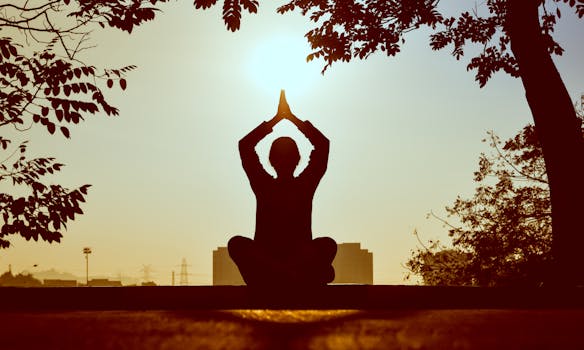Restorative Yoga: Regeneration and Release of Tension
In today’s fast-paced world, stress and tension have become commonplace, leading many individuals to seek effective methods for relaxation and rejuvenation. One such method gaining popularity is restorative yoga, a gentle practice designed to promote deep relaxation and healing. This article explores the principles of restorative yoga, its benefits, and how it can help individuals regenerate and release tension.
Understanding Restorative Yoga
Restorative yoga is a form of yoga that focuses on relaxation and restoration of the body and mind. Unlike more vigorous styles of yoga, restorative yoga involves holding poses for extended periods, often supported by props such as blankets, bolsters, and blocks. This practice encourages the body to enter a state of deep relaxation, allowing for physical and mental regeneration.
The Principles of Restorative Yoga
At its core, restorative yoga is built on several key principles:
- Support: Props are used to support the body in various poses, allowing for complete relaxation without strain.
- Stillness: Poses are held for longer durations, typically ranging from 5 to 20 minutes, promoting a meditative state.
- Breath Awareness: Practitioners are encouraged to focus on their breath, fostering a connection between body and mind.
- Mindfulness: The practice emphasizes being present in the moment, which can help reduce anxiety and stress.
The Benefits of Restorative Yoga
Restorative yoga offers a myriad of benefits that contribute to overall well-being. Some of the most notable advantages include:
- Stress Reduction: By promoting relaxation, restorative yoga helps lower cortisol levels, the hormone associated with stress.
- Improved Sleep: Regular practice can enhance sleep quality, making it easier to fall asleep and stay asleep.
- Enhanced Flexibility: The gentle stretching involved in restorative poses can improve flexibility over time.
- Emotional Release: The practice encourages emotional processing, allowing individuals to release pent-up feelings and tension.
- Physical Healing: Restorative yoga can aid in recovery from injuries by promoting blood flow and reducing muscle tension.
Case Studies and Statistics
Research supports the benefits of restorative yoga. A study published in the journal Complementary Therapies in Medicine found that participants who engaged in restorative yoga experienced significant reductions in stress and anxiety levels compared to those who did not practice yoga. Additionally, a survey conducted by the Yoga Alliance revealed that 80% of practitioners reported improved mental clarity and emotional stability after incorporating restorative yoga into their routines.
Incorporating Restorative Yoga into Your Routine
For those interested in exploring restorative yoga, here are some tips for getting started:
- Find a Class: Look for local studios or online platforms that offer restorative yoga classes.
- Create a Comfortable Space: Set up a quiet area at home with props like blankets, bolsters, and cushions.
- Start Slow: Begin with a few poses and gradually increase the duration as you become more comfortable.
- Listen to Your Body: Pay attention to how your body feels and adjust poses as needed to ensure comfort.
Conclusion
Restorative yoga is a powerful tool for regeneration and release of tension, offering numerous physical and mental health benefits. By focusing on relaxation, breath awareness, and mindfulness, practitioners can experience profound stress relief and emotional healing. Whether you are a seasoned yogi or a beginner, incorporating restorative yoga into your routine can lead to a more balanced and peaceful life. As we navigate the challenges of modern living, taking time to unwind and restore is not just beneficial; it is essential for our overall well-being.
